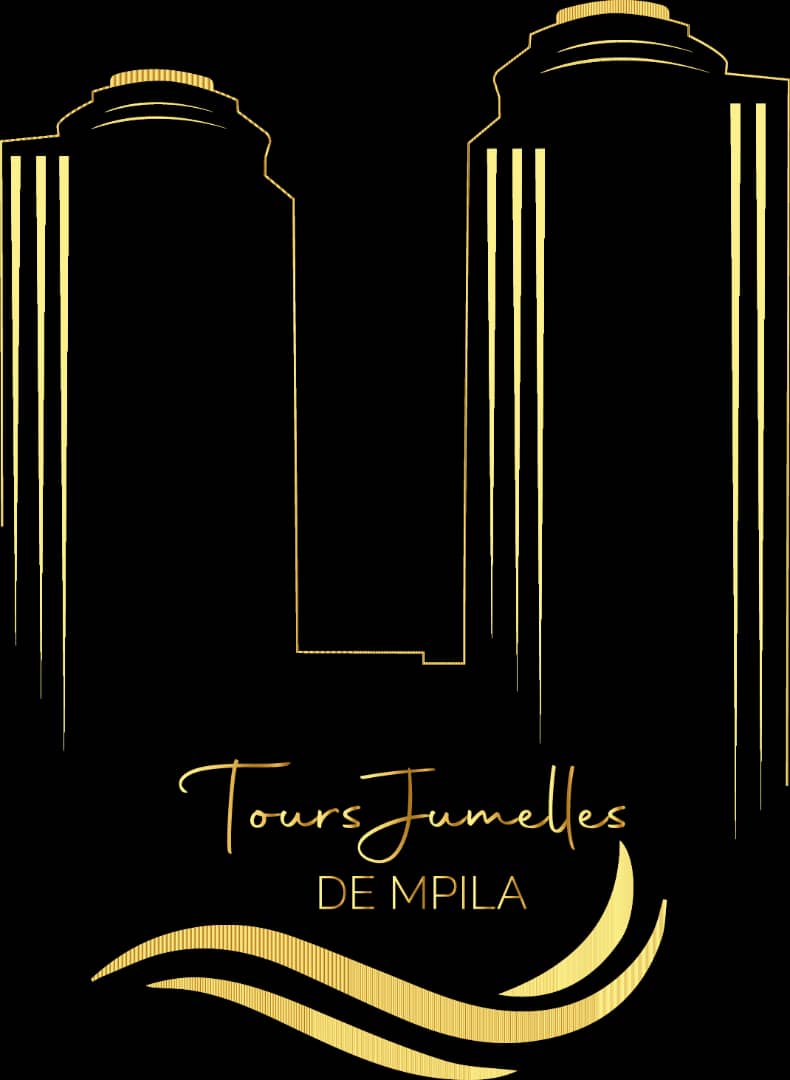

Book a Youth & Family Tour This Summer
Ideal for summer vacation visits to the Memorial and Museum, this 45-minute tour is educator-led and age-appropriate. The program explores what happened on 9/11 and our response, and includes an art activity to honor victims.
Language selector
Don't have an account? Create an account today and support the 9/11 Memorial & Museum.
Log in with Google , Facebook or Twitter .
- Create new account
- Forgot your password?
Opening Times
The Memorial opens at 8 a.m.
The Museum opens at 9 a.m.
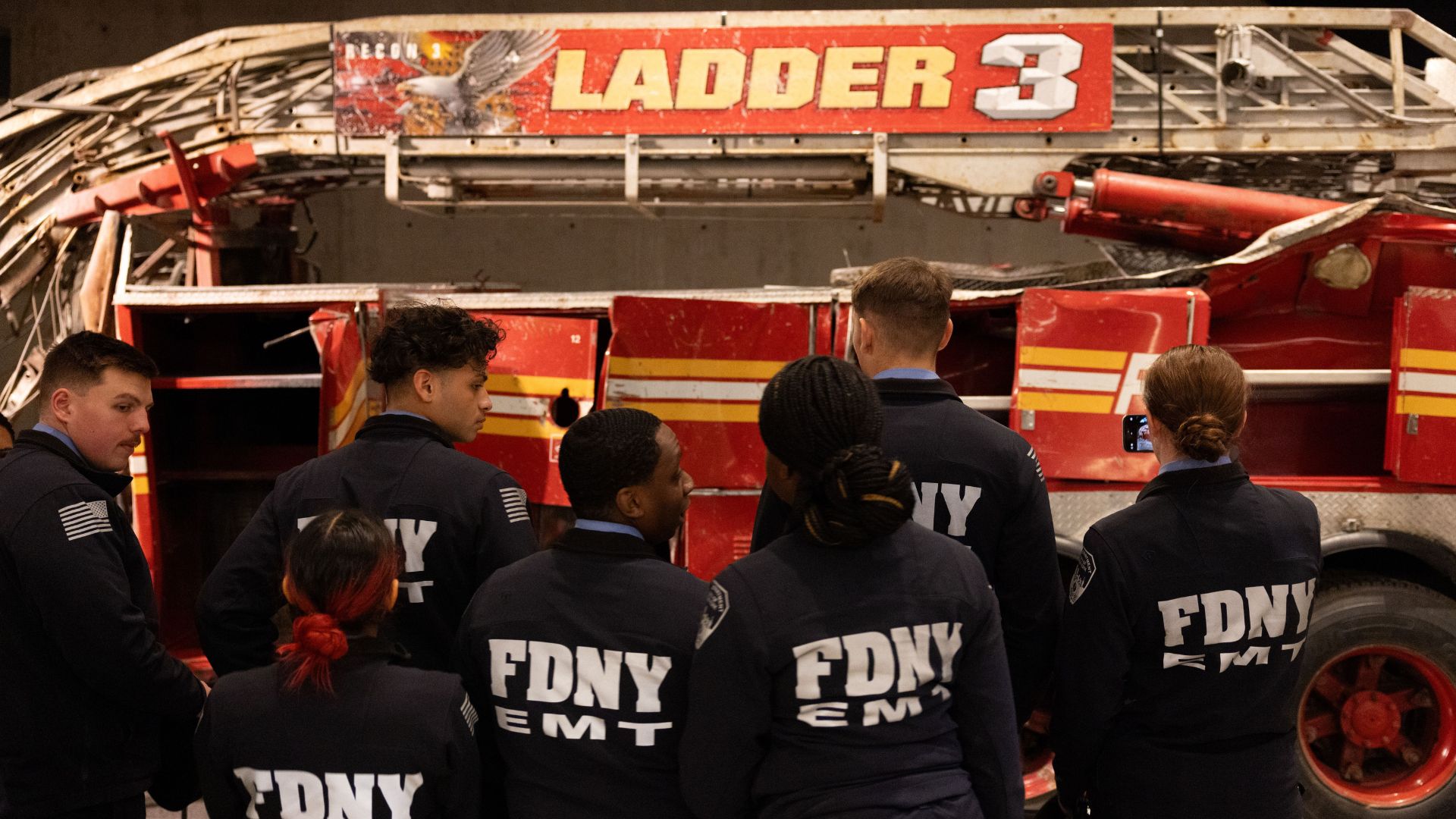
Dust: Illness & Advocacy After 9/11
Our newest installation highlights the thousands of stories of response and recovery after 9/11; the diversity and sheer number of people who have died from or are currently living with illness and trauma; and the incredible advocacy efforts to secure congressional funding for immediate and long-term medical monitoring, research, and treatment programs through the World Trade Center Health program.

The Museum is open with ongoing operational changes to ensure a safe Museum experience . Plan your visit today .
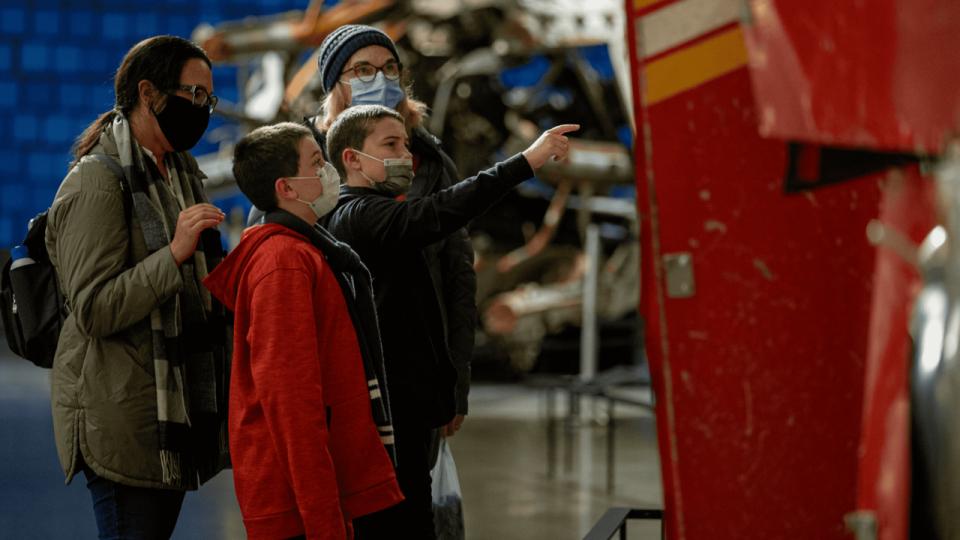
By providing a host of tailored educational programs and resources for students, teachers, families, and the general public, the Museum strives to foster a deeper understanding of 9/11 and its ongoing legacy.
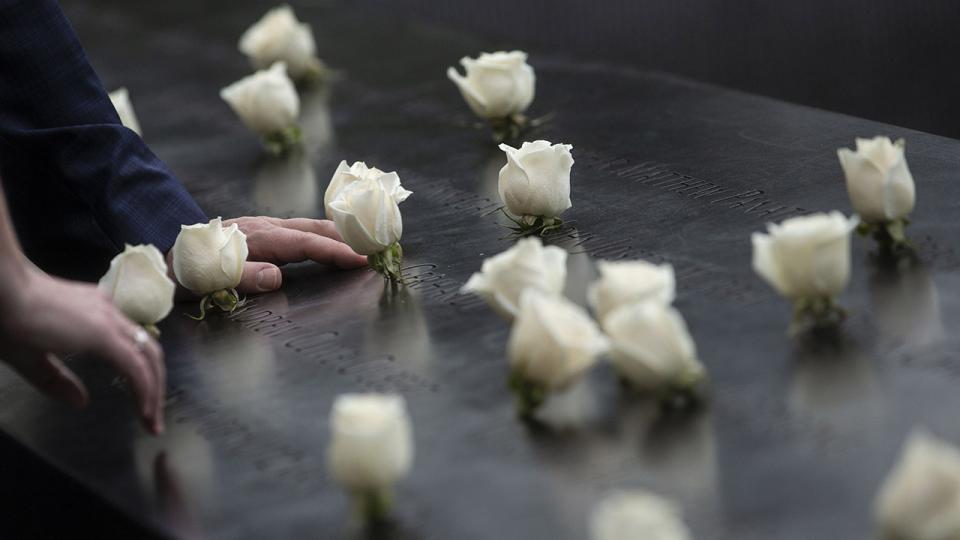
We actively engage with 9/11 family members , survivors , and rescue and recovery workers to offer services, education, and moments of connection and healing.
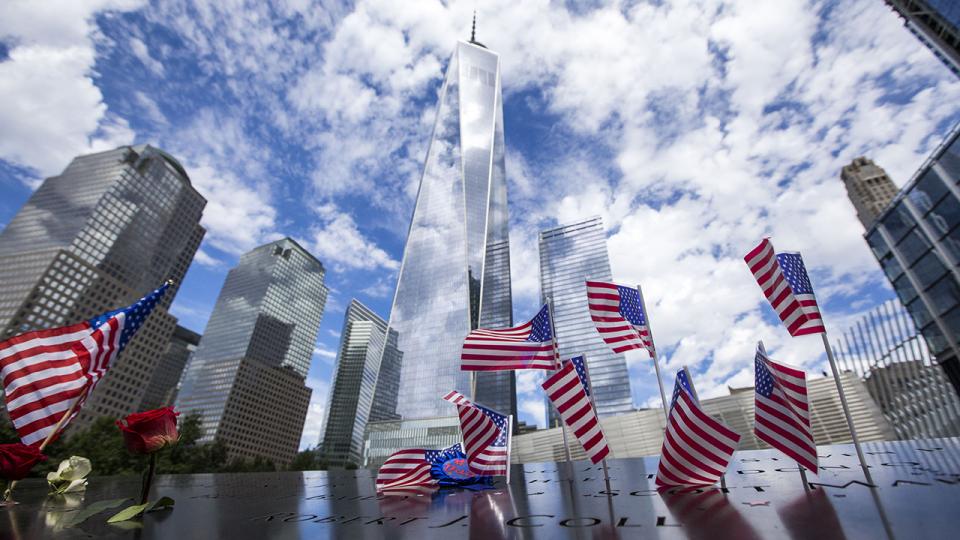
There are many ways to support our mission: make a donation , become a member , or volunteer .
- Group Visits
- Museum Admission Discounts
- New York First Mondays
- Visitor Guidelines
- Getting Here
- Accessibility
- Exhibitions
- The Collection
- Programs and Events
- Find a Name
- Outdoor Memorial Audio Guide
- 9/11 Memorial Glade
- The Survivor Tree
- Past Public Programs
- School Programs
- Lesson Plans
- Anniversary Digital Learning Experience
- Digital Learning Experience Archives
- Teacher Professional Development
- Activities at Home
- Youth and Family Tours
- Talking to Children about Terrorism
- 9/11 Primer
- Illness & Advocacy After 9/11
- Digital Exhibitions
- Interactive Timelines
- Oral Histories
- Visiting Information
- Rescue and Recovery Workers
- Witnesses and Survivors
- Service Members and Veterans
- September 11, 2001
- Remember the Sky
- February 26, 1993
- May 30, 2002
- The MEMO Blog
- Sponsor a Cobblestone
- Other Ways to Give
- Member Login
- 5K Run/Walk
- Benefit Dinner
- Summit on Security
- Corporate Membership
- The Never Forget Fund
- Visionary Network
- Give to the Collection
Pierre Parat
Perspective des tours jumelles

Pierre Parat (1928, France - 2019, France)
- ensemble fonctionnel : activité, affaires, industrie, administration
- urbanisme et aménagement
Photo credits : Centre Pompidou, MNAM-CCI/Philippe Migeat/Dist. GrandPalaisRmn
Image reference : 4N28160
Image presentation : l'Agence Photo de la RMN

Detailed description
By the same artist.
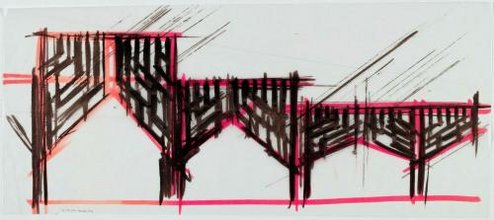
Elévation, poteaux, détails de la mosquée
1978 - 1983
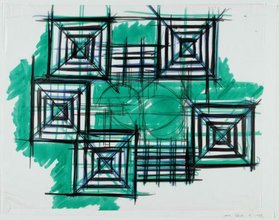
1970 - 1972
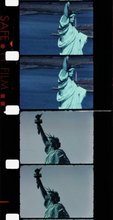
avril 1981 - septembre 1981
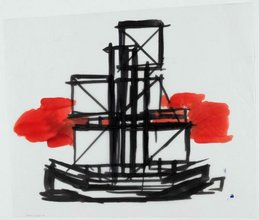
Élévation sur rue Baudricourt
1970 - 1973
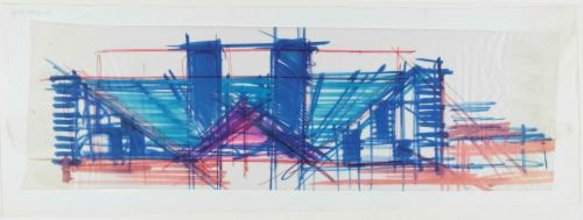
Perspective de la tour

1968 - 1973
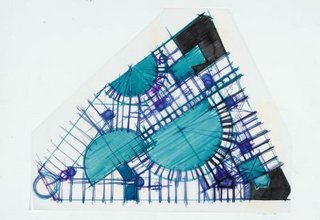
Plan de masse (ou plan-masse) Esquisse
1978 - 1985
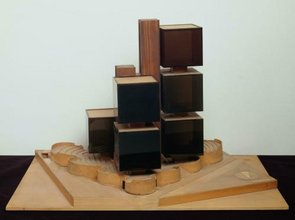
Michel Andrault, Pierre Parat
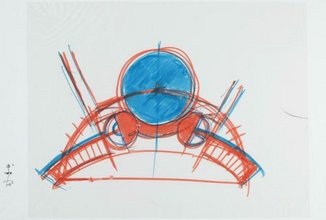
1998 - 2008
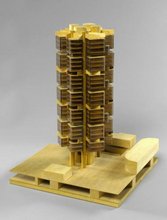
1973 - 1975
External links
La collection du Musée national d’art moderne
Tours Jumelles GIF
- Tours Jumelles
- Tour Jumelle
- Bonne Année
Related GIFs
- Route planner

The best MTB trails around Jumelles
There are some great mountain biking routes around Jumelles — but how do you know where to go? Well, we’ve reviewed our full collection of mtb routes around Jumelles to bring you the best. Explore them all below.
Plan. Save. Navigate. Your best adventures await.
Start today with a free komoot account.
Bois des Plaisirs – Bois de la Ronce loop from Cierrey
Enduro park – trail loop from avrilly.

Let us show you the way with the komoot mobile app
Mare verdun – bois de mare la trappe loop from la forêt-du-parc, history of france loop from les ventes, mare du rondel loop from le plessis-grohan.
Our Tour recommendations are based on thousands of activities completed by other people on komoot.
Popular around Jumelles
Hiking Collection by komoot
Running Collection by komoot
Bike Touring Collection by komoot
Find the perfect Tour
Explore the most popular tours around jumelles, discover the most popular attractions around jumelles.
Explore more of Évreux : Browse the best MTB Trails in other regions.
- Forêt De Pacy
- La Heunière
- Pacy-Sur-Eure
- Saint-Vincent-Des-Bois
- La Chapelle-Réanville
- Saint-Pierre-D'Autils
- Saint-Marcel
- Fontaine-Sous-Jouy
- Le Plessis-Grohan
- Criquebeuf-La-Campagne
- La Bonneville-Sur-Iton
- Normanville
- Le Vieil-Évreux
- Sainte-Colombe-Près-Vernon
- Bernienville
- Saint-Sébastien-De-Morsent
- Mesnils-Sur-Iton
- Les Baux-Sainte-Croix
- Armentières-Sur-Avre
- Saint-Germain-Des-Angles
- Aulnay-Sur-Iton
- Guichainville
- Villez-Sous-Bailleul
- Bois Du Défend
- Arnières-Sur-Iton
- Le Boulay-Morin
- Saint-Georges-Motel
- La Chapelle-Du-Bois-Des-Faulx
- Sacquenville
- Gauville-La-Campagne
- Le Mesnil-Fuguet
- Gournay-Le-Guérin
- Angerville-La-Campagne
- Mesnil-Sur-L'Estrée
- Canappeville
- Houlbec-Cocherel
- Le Val-David
- Sylvains-Les-Moulins
- Tourneville
- Émalleville
- Saint-Germain-Sur-Avre
- Saint-Martin-La-Campagne
- Jouy-Sur-Eure
- Villiers-En-Désœuvre
- Saint-Vigor
- Garennes-Sur-Eure
- La Boissière
- Saint-Germain-De-Fresney
- Bretagnolles
- Saint-Élier
- Saint-Aubin-D'Écrosville
- Chéronvilliers
- Nogent-Le-Sec
- Houetteville
- Marcilly-La-Campagne
- La Madeleine-De-Nonancourt
- Marcilly-Sur-Eure
- Courdemanche
- Illiers-L'Évêque
- Bois-Le-Roi
- L'Habit
- Forêt D'Ivry
- Forêt De Roseux
- Champigny-La-Futelaye
- Mousseaux-Neuville
- La Couture-Boussey
- Ézy-Sur-Eure
- Ivry-La-Bataille
- Saint-Laurent-Des-Bois
- Lignerolles
- Gaudreville-La-Rivière
- Champ-Dolent
- La Croisille
- Chavigny-Bailleul
- Forêt De Merey
- Feuguerolles
- Hardencourt-Cocherel
- Vaux-Sur-Eure
- Saint-Aquilin-De-Pacy
- Caillouet-Orgeville
- Croisy-Sur-Eure
- La Baronnie
- Saint-André-De-L'Eure
- Foucrainville
- Bérengeville-La-Campagne
- Ferrières-Haut-Clocher
- La Forêt-Du-Parc
- Francheville
- Saint-Christophe-Sur-Avre
- Daubeuf-La-Campagne
- Crosville-La-Vieille
- Le Neubourg
- Villez-Sur-Le-Neubourg
- Grandvilliers
- Épreville-Près-Le-Neubourg
- Sainte-Colombe-La-Commanderie
- Le Tremblay-Omonville
- Le Plessis-Hébert
- Boisset-Les-Prévanches
- Conches-En-Ouche
- Le Mesnil-Hardray
- Nagel-Séez-Mesnil
- Chaise-Dieu-Du-Theil
- Saint-Antonin-De-Sommaire
- L'Hosmes
- Buis-Sur-Damville
- Tillières-Sur-Avre
- Breux-Sur-Avre
- Les Authieux
- Verneuil-Sur-Avre
- Saint-Victor-Sur-Avre
- Tournedos-Bois-Hubert
- Sainte-Marie-D'Attez
- Le Fidelaire
- Les Baux-De-Breteuil
U.S. Open: Nine things to know about Pinehurst No. 2
14 Min Read
Need to Know
The U.S. Open visits a historic venue that still provides a unique challenge
Change Text Size
Few courses in this country can match the pedigree of North Carolina’s famed Pinehurst No. 2, the Donald Ross gem that will host this week’s U.S. Open.
Home of the North & South Men’s Amateur since 1901 and the North & South Women’s Amateur since 1903, Pinehurst has also been the site of the North & South Open Championship (1901-1951), the U.S. Amateur (1962, 2008, 2019) and the U.S. Women’s Amateur (1989). Pinehurst No. 2 also was home to the PGA Championship in 1936.
The 1951 Ryder Cup was played there, as was the PGA TOUR’s Hall of Fame Classic/World Open (1973-1982) and the TOUR Championship (1991, 1997). This year’s U.S. Open follows previous incarnations of that event in 1999, 2005 and 2014, the latter year when No. 2 also staged the U.S. Women’s Open a week after the men’s.
That most recent U.S. Open at No. 2 also was the debut of a new look for Ross’ gem, with the Bermudagrass rough replaced by sandy waste areas that gave the course a more rustic feel. This will be the second time the U.S. Open has been played under those conditions. Before play gets underway Thursday, here are nine things to know about this historic venue:
1. Fantastic finishes
Though tournaments have been played at Pinehurst No. 2 since the start of the 20th century, it wasn’t until the end of it that the U.S. Open arrived. The first U.S. Open at Pinehurst No. 2 also produced one of the most famous finishes in the tournament’s history, one that is still memorialized in a statue that stands behind the 18th green (though the statue will be moved during the tournament so that it is more accessible to fans).
Payne Stewart holed an 18-foot par putt on 18 to win the 1999 U.S. Open by one over Phil Mickelson and finish two shots ahead of Tiger Woods and Vijay Singh. It was a memorable finish, immortalized by the tragedy that followed shortly after. Stewart died in a plane crash just four months after winning his third major championship.
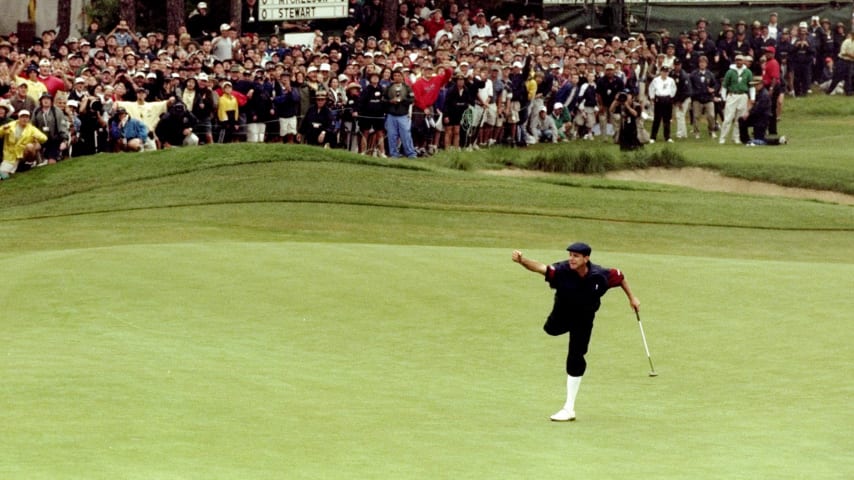
Payne Stewart celebrates victory after sinking his final putt during the last day of the 1999 US Open at Pinehurst No. 2. (Tom Able-Green /Allsport)
Woods came close at Pinehurst again six years later. He finished two shots behind New Zealand’s Michael Campbell, however. The 2005 U.S. Open at Pinehurst was Campbell’s lone PGA TOUR victory. Campbell’s final-round 69, which Woods matched, allowed him to pass an eclectic trio that held the 54-hole lead. Retief Goosen, winner of the 2001 and 2004 U.S. Opens, was atop the leaderboard entering Sunday alongside two players who had to go through Final Qualifying, Olin Browne and Jason Gore.
Goosen played in Sunday’s final group alongside Gore, who was on the Korn Ferry Tour at the time. Goosen and Gore were a combined 25 over par Sunday, clearing the way for Campbell. Gore would win three consecutive starts on the Korn Ferry Tour (and shoot a 59), then win his lone PGA TOUR title later that year.
Ten years ago, the USGA broke new ground by holding the men’s and women’s U.S. Opens on back-to-back weeks at Pinehurst No. 2. First, Martin Kaymer rode a hot putter to separate from the field as Erik Compton and Rickie Fowler tied for second, eight back. They were the only three players to finish under par.
Michelle Wie then broke through as a major winner by recovering from a double-bogey on the 16th hole Sunday with a birdie on 17 to secure a two-shot victory over Stacy Lewis.

2. More than 'turtle backs'
You’ll often hear the putting surfaces at Pinehurst No. 2 referred to as ‘turtle-backs.’ This is an oversimplification and not Ross’ original intent. There is good reason to believe that the centers and some of the edges of Pinehurst’s greens have risen over time through aggressive top-dressing, sand splash from greenside bunkers, and some aggressive reconstruction work in the late 20th century. The results have been greens with more of that domed, convex, turtleback effect than is evident in the early photography – and more than Ross intended. This has contributed to the myth that those turtle-back greens are either the products of Ross’ design or characteristic of his work elsewhere. In both cases, they are not.
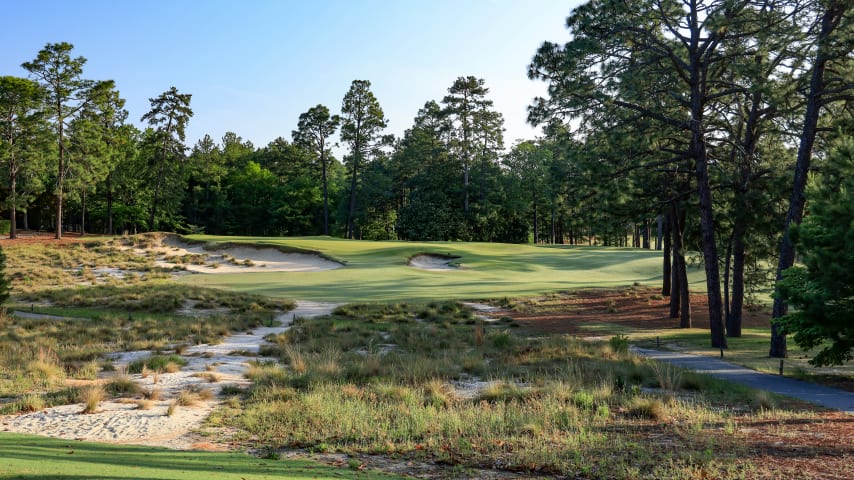
A view of the ninth hole at Pinehurst No. 2. (David Cannon/Getty Images)
Ross took pains to build green with rolling contours and did not rely only on simple convex, turtle-back shapes.
3. Ross' writings
Ross may have been a Scotsman, but he transformed the American golf landscape. He’s credited with more than 400 course designs, expansions and renovations starting in 1900. The North Carolina sandhills were especially important to him. He wintered at Pinehurst, where he expanded the resort to four courses. Pinehurst No. 2 evolved slowly, not reaching its current routing until the run-up to the 1936 PGA Championship when its sand greens were converted to grass. It achieved its current routing when Ross created the current fourth and fifth holes, replacing two others that were taken out of rotation.
In the 1936 PGA Championship program, Ross wrote one of his rare, detailed analyses of his own designs. The essay, “Architectural Features of the Championship Course,” highlights four elements of play that have stood the test of time.
Ross focuses first on the importance of “long and accurate tee shots.” He believed there should be a penalty for straying from the short grass and an advantage for properly positioning. “The landing area should be more exacting for a longer hitter,” Ross wrote. That means narrowing down fairways or cutting off the preferred landing zone with bunkers or rough.
Secondly, Ross declared the pre-eminence of “accurate iron play” as the ideal measure of shot-making. By that, he specifically said, “I consider long iron play to be the ultimate test of a player’s skill.” In those days (1936), players generally faced approach shots on par-3s and par-4s of 180-220 yards, which would have meant anything from a 5-iron and longer. Second shots on par-5s would have been at least as long to leave one in a proper position for a short-iron third.
Ross’ third point focused on putting strategy. He gave players a “good opportunity on shorter putts” by having simple contours closer to the holes. Longer lag putts would face “complex, vexing problems” by forcing players to go up, over and around sweeping slopes. Ross took particular pains to build interesting green contours and did not rely on anything as simple as the convex, turtle-back shape that is sometimes compared to an upside-down saucer.
Finally, Ross believed in “interesting greenside contours, especially for shorter holes.” He believed the recovery from a missed approach should require precision. As someone who had grown up and apprenticed on the classic Scottish links of Dornoch, St. Andrews and Carnoustie, Ross appreciated how Pinehurst’s sandy soil could be shaped to replicate the “humps and hollows of Scottish seaside courses.”
4. A new look
The Pinehurst No. 2 of the 1999 and 2005 U.S. Opens is no longer.
In the run-up to the 2014 U.S. Open, Bill Coore and Ben Crenshaw undertook a meticulous restoration of Pinehurst No. 2. They brought back a scruffier, tawnier look, feel and playability that Pinehurst had before becoming lush, soft and green in the 1970s. In the absence of Ross’ own design plans they had to rely upon photographic evidence and the occasional map – like the one showing the old, single line of steel irrigation pipe. That unlocked the key to the restored irrigation plan, which entailed reducing the number of sprinklers in use from 1,100 to 450. The fairways became defined by the reach of the sprinklers. The areas outside of their spray returned to nature, featuring the sandy soil and native plants of the region.
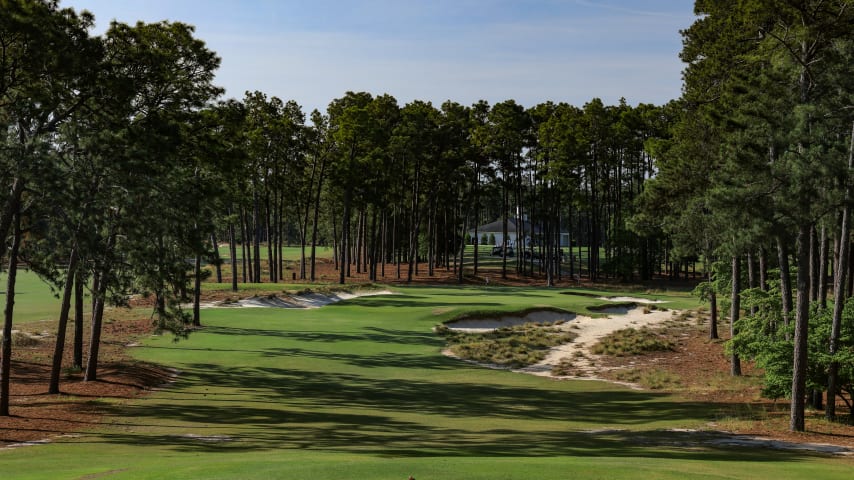
A view from tee on the17th hole at Pinehurst No. 2. (David Cannon/Getty Images)
Tree management and the removal of 20 acres of bermudagrass rough led to widened fairways and extensive areas of sandy, wiregrass native areas lining the holes. This led to greater uncertainty -- and sometimes stiffer penalties -- after wayward drives.
Since 2014, the native wire grass areas have filled in, producing even more hazardous unpredictability. Competitors at this year’s U.S. Open will see more wiregrass around the landing areas than a decade ago and the additional growth of local plants, adding even more penalty for those who miss the fairway.
The greens have also been converted from bentgrass to Champion Ultradwarf Bermudagrass, a species more tolerant of warm weather.
Pinehurst No. 2 does not look like your standard lush resort layout. It now sports a classic Sandhill look because it is not overseeded in winter and looks semi-dormant: frittery at the edges in season and firm and fast year-round.
5. Firm, fast and shorter?
Pinehurst No. 2 will have a scorecard yardage of 7,550 yards, though it will likely play shorter because of the firm conditions, allowing extensive roll-out of tee shots that hit the fairway. Relative to today’s distances, Pinehurst will actually play shorter than it did in its U.S. Open debut a quarter-century ago.
The average drive on the PGA TOUR through this year’s PGA Championship was 297.1 yards. Twenty-five years ago, Pinehurst measured 7,175 yards, and the average drive was 271.6 yards.
In other words, the golf course is 5% longer while drives are traveling 11 percent longer.
At the 1936 PGA, the course measured 6,879 yards and had a par of 72, two strokes higher than today. We can safely estimate that the average drive went about 240 yards – certainly no farther. When we measure 1936 against 2024, we come up with some interesting data.
Best shots from waste area and pine straw, featuring Tiger Woods, Justin Thomas and others
The course is now 10% longer, while PGA TOUR drives are traveling 24% longer. If we take the total percentage of course yardage covered by an average of 14 drives played per round, we find that in 1936, the driver comprised 49% of all distance traversed; today the driver accounts for 55%.
Even with today’s length, players will be hitting more short irons into greens, not the long irons Ross so admired.
6. Three holes that typify the test
The beauty of Pinehurst No. 2 is that every hole is interesting and demanding. This is not the kind of course where obvious disaster looms; water is not in play, and out-of-bounds does not loom. And yet, you can quickly look foolish around the greens after a wayward approach. Here are three dramatic examples of the test that makes Pinehurst No. 2 unique.
No. 3: This short par-4 is listed at 387 yards, but if previous form is any guide, it will be made drivable at least one day. A deep, punitive bunker extends out into the fairway on the right at the far end of the waste area ranging at 305 yards to carry and to be avoided at all cost. The green here is perched up dramatically over a trio of protecting front bunkers and falls off steeply behind. It does not make for a receptive target.
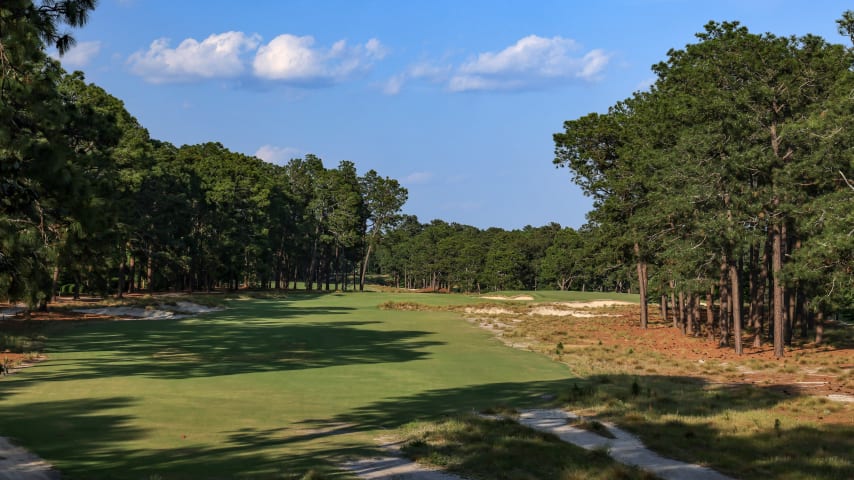
A view from the tee on the par 4, third hole at Pinehurst No. 2. (David Cannon/Getty Images)
Unless it’s within drivable range, the likely play is to lay up to the fairway and, from there, hit a very precise wedge. On the left, just beyond a boundary fence, is the stylish two-story cottage where Ross lived from 1925 until he died in 1948. Local lore has it that the third green’s proximity to his yard led him to spend a lot of time there, making this a particularly devilish putting surface.
No. 5: There might be something to that tale about Ross’ continued tinkering with the third green because Pinehurst’s other extremely vexing green, on the 588-yard fifth hole, sits next to No. 3 and thus also near Ross’ cottage.
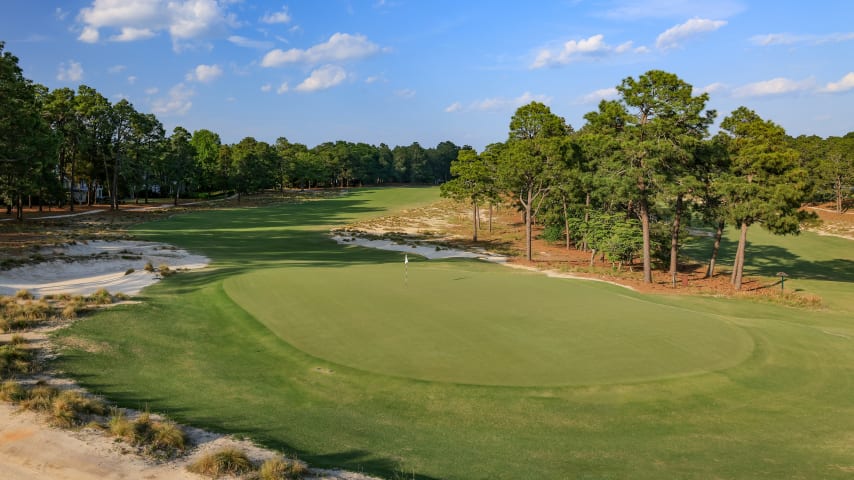
A view from behind the green of the par 5, fifth hole on Pinehurst No. 2. (David Cannon/Getty Images)
The left side of the putting surface seems to collapse into the native wiregrass area. A ridge down the middle creates a divide such that any right-to-left approach may slingshot across the green and down the steep slope on the left. Compounding the difficulty on approach is a slight fall-off toward the back of the green that makes it hard to stop a shot struck with too much velocity or too little spin.
The shape of the green and hole location require care in the angle of approach and, to set that up, the angle of the tee shot. The ideal entry line is from the left side of the fairway; this maximizes the width of approach and creates a better incline to support the shot. But the fairway canters from right to left, and the low left side kicks steeply into a long sandy waste area. It’s a classic example of the ideal line of approach bringing a player closest to significant trouble.
No. 16: This is the longest par 4 at Pinehurst, measuring 536 yards. While it plays slightly downhill from tee to green, the putting surface is propped up modestly and is extremely well bunkered on the sides and behind. Along the way, this hole is classic Ross, requiring a variety of shot shapes.
Throughout the course, players will find situations calling for a right-to-left tee shot followed by a left-to-right approach shot — and vice versa on the next par 4 or 5. The sequence can change depending on which side of the green the hole is cut on that day.

A view from behind the green on the par-4 16th hole with the par-3 17th hole at Pinehurst No. 2. (David Cannon/Getty Images)
On the 16th hole, the ideal drive is a right-handed player’s draw to make use of the natural fairway slope, followed by a left-to-right iron shot into the convex putting surface. There’s little point to flag-hunting on this hole, as throughout No. 2, a smart player who aims for the center of the green will continually face manageable putts while reducing exposure to trouble at the margins. That means playing more for pars than for birdies. At U.S. Opens at Pinehurst, par is always a good score.
7. Lessons for your own game
Folks spectating on-site or watching from home can learn a lot from observing play at Pinehurst No.2, starting with creativity around the greens.
Sole reliance on a lofted wedge will not suffice around the greens; players will have a variety of options for their short-game shots.
Historically, Pinehurst has not been a bomber’s paradise, serving as a reminder that there are many ways to excel. Yes, length is an asset, but only length with accuracy. Seeing how relatively short hitters and classic shot-makers can fare against the power players will be fascinating.
Finally, the aesthetics of the course remind that the ultra-green look of a course doesn’t always translate to the best test of shot-making. The turfgrass coverage of Pinehurst No. 2 is healthy, dense and ideal for providing tight lies that truly test the crispness of a player’s contact with the ball.
8. There are no design plans
Ross started his career in the early 1900s and became known for meticulous documentation of full routings and hole-by-hole elements. Yet for all the time Ross pored over the evolution of Pinehurst No. 2, much of it with longtime Pinehurst superintendent Frank Maples — Ross’ construction coordinator in and around the Carolinas — there are no surviving drawings or plans for the course, if they were ever drawn up at all.
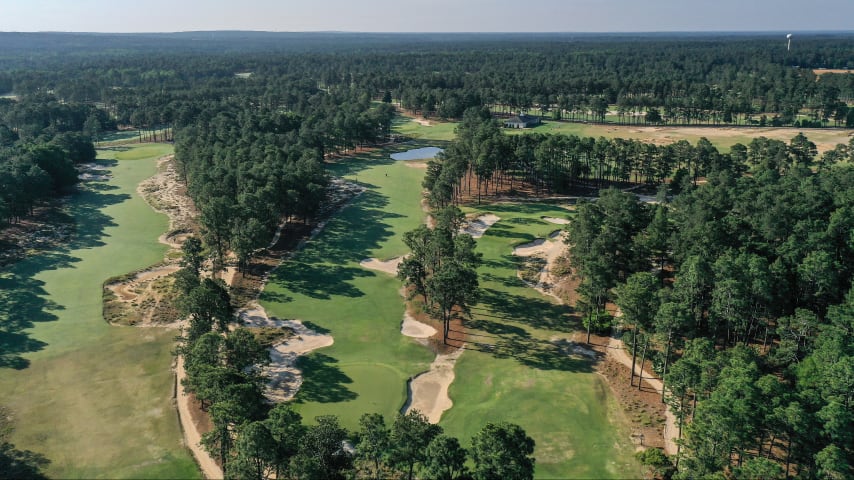
An aerial view of the par-4 eighth hole (L) with the par-4 16th hole (center) and the par-3 17th hole (R) at Pinehurst No. 2. (David Cannon/Getty Images)
We have pretty good photography of the course from the 1930s, plus basic two-dimensional look-down schematics of the holes from that 1936 PGA Championship program. But otherwise, there are no scaled drawings showing bunker depths, green heights or slope percentages.
9. Agronomic advantages
Now a second home to the USGA, Pinehurst has long been a catalyst for agronomic advancement. In the 1920s, Ross set up test plots throughout the resort in his search for a suitable turfgrass to thrive in that warm climate – including a multi-species plot just outside the front steps of the downtown Holly Inn.
The basic tool for the 1999 U.S. Open was the Stimpmeter. A prototype firmness meter was used at the 2005 U.S. Open. Moisture meters to probe below the surface were introduced in 2014. The technology in beta-testing this year is the G-3 golf ball.
The G-3 is a dimple-less ball that doubles as a digital information storage unit, measuring the greens' smoothness, speed and firmness.
That information is then fed into the USGA’s proprietary Deacon software to help create a comprehensive database. The database will, among other things, help superintendents monitor how aerification and top-dressing programs impact putting surfaces.
It helps to have a new operations building near the parking lot where the old tennis courts stood. USGA Golf House Pinehurst now houses the USGA Green Section, the Research and Test Center, and the Word Golf Hall of Fame. An outdoor testing range and pavilion are now under construction to facilitate more accurate equipment research.
As for tending to Pinehurst No. 2, the course will be in the very capable hands of veteran superintendent John Jeffreys (16 years at Pinehurst), golf course maintenance operations manager Kevin Robinson (27 years) and director of course and grounds management Bob Farren, CGCS (44 years). They are aided by a staff of 40 full- and part-time employees, 30 volunteers from other Pinehurst-area courses, and another 30 volunteers from a wider net of courses, as well as alumni employees and industry partners.
Bradley S. Klein is a veteran golf writer and author of 10 books on course design. A former PGA TOUR caddie, he was architecture editor of Golfweek for over two decades and is now a freelance journalist and course design consultant. Follow Bradley S. Klein on Twitter .
Hilton Brazzaville Les Tours Jumelles Hotel & Residences
Special offers, showing 1 - 8 of 8 offers showing 1 through 8 of 8 offers.
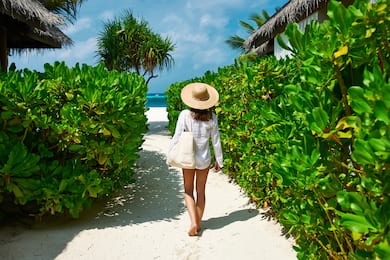
Earn double Hilton Honors Points for each night of your stay.

Honors Discount Advance Purchase
Save up to 17% off our Best Available Rate* by booking in advance. It pays to plan ahead!

Breakfast Included
Fuel your day with breakfast included for every registered guest, each night of your stay.

AARP Members Save
AARP Members, Save up to 10%

AAA/CAA Members Save
AAA/CAA Members, Save up to 10%

Military Family Rate
Active and retired military, veterans, and their families enjoy exclusive savings at participating hotels.

Buy Points for Your Next Getaway
Make your own luck and earn more Bonus Points with any Points purchase for a limited time. Travel, culture, sports, and more are at your fingertips when you use Points! Offer ends July 23.
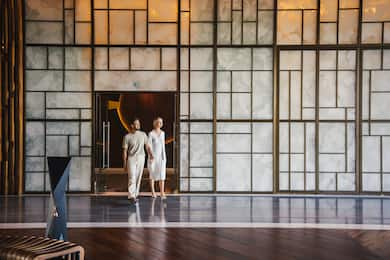
Earn twice as many Bonus Points with the Double Points Promotion
Earn 2X Bonus Points on all stays through September 2.

IMAGES
VIDEO
COMMENTS
La map contient : -Les 2 tours jumelles principales entièrements aménagées (WTC 1 & 2) -WTC 4 & 5 (aménagés aussi) -Place principale. -Centre commercial miniaturisé en sous-sol. -Station de métro en sous-sol. Aucun pack de texture ni mod n'est recommandé.
The Original World Trade Center Complex. Land Structure Map. 50%. 17. 13. 3.6k 457 7. x 12. BlueCreeper512 • 3 years ago. Minecraft World Trade Center 1:1 2001 [CLOSED]
Days. 00. Hours. 00. Minutes
ABONNE TOI ! https://www.youtube.com/channel/UCSUxhIJaqrjCQjMoAFKAxJg/?sub_confirmation=1Construction inspiré de Akuro : https://m.youtube.com/channel/UCqcqS...
Les deux tours emblématiques du World Trade Center (WTC 1 et WTC 2 appelées aussi « Twin Towers », littéralement « tours jumelles ») avaient toutes deux 110 étages. 1 WTC, la tour Nord, s'élevait à 417 mètres et possédait une antenne de télévision de 109,8 m de haut qui fut ajoutée en 1978. 2 WTC, la tour Sud, s'élevait à 415 ...
Located at the World Trade Center in New York City, the 9/11 Memorial Museum tells the story of 9/11 through media, narratives, and a collection of monumental and authentic artifacts, presenting visitors with personal stories of loss, recovery, and hope. The Museum is open with ongoing operational changes to ensure a safe Museum experience.
Main title. Perspective des tours jumelles. Creation date. 1987. Is part of the set. Aménagement du quartier Valmy, La Défense, Île-de-France. (Dissociable set of artworks) Projet non réalisé. 1990 - 1995.
Browse the best walks around Jumelles and see interactive maps of the top 8 hiking trails and routes. Hiking around Jumelles is one of the best ways to experience more of the landscape, although finding the right route is not always easy. ... Intermediate Hiking Tour. Good fitness required. Easily-accessible paths. Suitable for all skill levels.
We bring you the top 8 bike rides around Jumelles — all you've got to do is pick the one that's right for you. komoot. ... Jumelles's best cycling routes on the map. Discover More Tours around Jumelles. Last updated: February 25, 2024 ... Explore the most popular Tours around Jumelles. Road Cycling Routes around Jumelles.
Browse the best walks around Longué-Jumelles and see interactive maps of the top 7 hiking trails and routes. Hiking around Longué-Jumelles is one of the best ways to experience more of the landscape, although finding the right route is not always easy. ... Explore the most popular Tours around Longué-Jumelles. Cycling around Longué-Jumelles.
Tours jumelles Santullo is a building in Estuaire Province, Gabon. Tours jumelles Santullo is situated nearby to Ministère des Eaux et Forets. ... map to travel: Tours jumelles Santullo. Notable Places in the Area. Libreville Notre-Dame-de-l'Assomption Cathedral. Church
Evolution des tours jumelles de Mpila
View the Hilton Brazzaville Les Tours Jumelles Hotel & Residences hotel's contemporary guest rooms, dining options, flexible event space, and on-site amenities.
Les Tours Jumelles. "Les tours Jumelles" est un terme qui désigne deux gratte-ciels construite côte-à-côte et idantique ou quasi idantique. Elles faisaient 415 et 417 mètre de hauteurs.Elles ont étaient détruitent le 11 septembre 2001.Maintenant ces deux tours ont étaient remplacer à leur emplacement par deux mémorial. Tokyo Skytree.
Hilton Brazzaville Les Tours Jumelles Hotel & Residences /. Hotel Location. Get location, parking, and transportation information, along with nearby attractions to Hilton Brazzaville Les Tours Jumelles Hotel & Residences. A vibrant Brazzaville community is located just outside our doors.
The Hilton Brazzaville Les Tours Jumelles Hotel & Residences hotel offers stylish accommodations with unmatched quality service. Our spacious rooms come with WiFi access, an HDTV, access to on-site amenities, and more.
File Size: 4399KB. Duration: 5.000 sec. Dimensions: 498x498. Created: 2/12/2023, 12:41:53 AM. The perfect Tours Jumelles Tours Twin Towers Animated GIF for your conversation. Discover and Share the best GIFs on Tenor.
Details. File Size: 11791KB. Duration: 10.000 sec. Dimensions: 498x498. Created: 12/30/2022, 7:25:03 PM. The perfect Tours Jumelles Tours Jumelles Animated GIF for your conversation. Discover and Share the best GIFs on Tenor.
There are plenty of places to see and visit around Jumelles. Whether you love hiking or cycling, Jumelles is a region where 6 hidden gems are waiting to be explored and visited. Check the top places to visit in the region and plan your next adventure today.
Saint-Victor-Sur-Avre. Tournedos-Bois-Hubert. Bémécourt. Sainte-Marie-D'Attez. Le Fidelaire. Les Baux-De-Breteuil. Jumelles. Mountain Bike Trails around Jumelles: See the top 11 most beautiful MTB routes and trails with personal tips from other mountain bikers.
Happiness is enjoying a day of signature amenities at Hilton Brazzaville Les Tours Jumelles Hotel & Residences like free WiFi, on-site dining and drinks, room service, and flexible event space.
Pinehurst No. 2 will have a scorecard yardage of 7,550 yards, though it will likely play shorter because of the firm conditions, allowing extensive roll-out of tee shots that hit the fairway ...
Hilton Brazzaville Les Tours Jumelles Hotel & Residences. Les Tours Jumelles, Brazzaville, 00000, Congo. Book your stay at our conveniently located Hilton Brazzaville Les Tours Jumelles Hotel & Residences hotel. Our full-service Hilton hotel offers exceptional amenities including spacious guest rooms, on-site dining, and fitness center.
The 2024 Tour de France will be the 111th edition of the Tour de France. It will start in Florence, Italy on 29 June, and will finish in Nice, France on 21 July. The race will not finish in (or near) Paris for the first time since its inception, owing to preparations for the Paris 2024 Olympic and Paralympic Games .
Earn twice as many Bonus Points with the Double Points Promotion. Earn 2X Bonus Points on all stays through September 2. Earn Points Honors Member. Register for Free. Page 1 of 1. Discover exceptional hotel packages and deals at the Hilton Brazzaville Les Tours Jumelles Hotel & Residences. Our full-service hotel includes spacious guest rooms ...